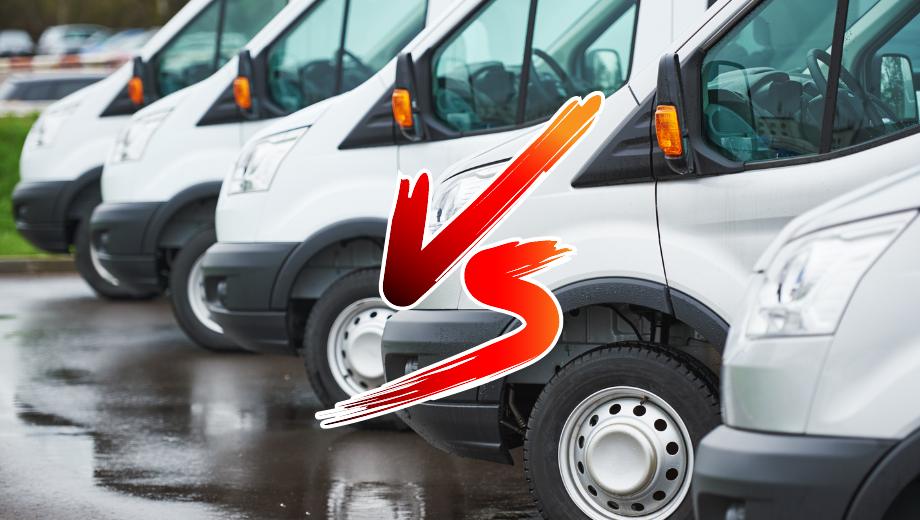Minivans and vans, two vehicle types often used interchangeably by many, but each comes with its distinct features and purposes. This article aims to dive deep into the core differences between minivans and vans, highlighting their advantages, disadvantages, and best options available in the market today.
What is a Minivan
A minivan, often referred to as a multi-purpose vehicle (MPV) in some regions, is a vehicle designed primarily for personal use, typically seating seven or eight passengers. It’s tailored for families, boasting sliding rear doors for easy access, and often comes with multiple rows of seats that can be folded or removed to increase cargo space. The architecture of a minivan is usually unibody, meaning the body and frame are a single structure, which often results in a smoother ride compared to other larger vehicles.
Pros of a Minivan:
- Versatility: Flexible seating arrangements make it easy to toggle between passenger and cargo needs.
- Fuel Efficiency: Generally, minivans offer better fuel efficiency than larger vans or SUVs.
- Safety: Many modern minivans come equipped with the latest safety technologies like adaptive cruise control, lane departure warnings, and more.
- Convenience: Sliding doors, low floor height for easy entry and exit, and rear-seat entertainment options make them perfect for family outings.
Cons of a Minivan:
- Power: While they are efficient, they might not offer the same towing capacities or power as some larger vehicles.
- Perception: Some people find them less ‘cool’ or stylish compared to SUVs or sedans.
- Size: Despite being spacious inside, the overall size might not be enough for those needing extensive cargo space without compromising passenger seating.
What is a Van
A van is a larger vehicle predominantly designed for transporting goods or a larger number of passengers. Its body-on-frame design means the body and chassis are separate, offering more robustness especially suited for heavy-duty tasks. Vans can range from smaller models, often used by businesses for deliveries, to larger, full-size vans that can transport up to 15 passengers or offer vast amounts of cargo space.
Pros of a Van:
- Cargo Space: Vans typically have a significant amount of space dedicated to cargo, making them perfect for businesses.
- Passenger Capacity: Larger vans can accommodate more passengers than minivans, making them ideal for shuttle services or large family outings.
- Durability: The body-on-frame design can handle more wear and tear, especially when carrying heavy loads.
- Customization: Many businesses prefer vans because they can be easily customized for specific needs, from refrigerated compartments to shelving units or workbenches.
Cons of a Van:
- Maneuverability: Due to their size, vans can be challenging to navigate in tight city spaces.
- Fuel Efficiency: Generally, vans consume more fuel than minivans, especially the larger models.
- Parking: Finding a suitable parking space, especially in urban areas, can be a challenge due to their length or height.
- Initial Cost: Vans, especially specialized ones, can be more expensive than minivans.
What is the difference between minivan and van
Both minivans and vans serve their purposes efficiently, but there are striking differences between the two that can influence a buyer’s decision.
Difference in the Design
A minivan often sports a sleeker, more aerodynamic design, keeping family convenience and aesthetics in mind. Its unibody architecture ensures a smoother and quieter ride. In contrast, vans have a more boxy appearance, prioritizing function over form. The body-on-frame design of vans is a testament to their heavy-duty nature.
Maneuverability in the City
Given their compact design and advanced driving aids, minivans tend to be more nimble and easier to handle in city traffic. Parking in tight spots or navigating through narrow streets becomes less of a hassle. Vans, due to their size, might pose challenges in tight city spaces, making them more suited for highways or less congested areas.
Handling and Ease of Driving
The driving dynamics of minivans usually lean towards comfort. They offer car-like steering, good visibility, and easier parking capabilities, thanks to rear-view cameras and parking sensors in modern models. Vans, given their utilitarian nature, might not feel as smooth. However, their higher vantage point provides a commanding view of the road.
Cargo Space
While minivans are versatile with their seating arrangements to create more cargo space, vans inherently offer vast cargo areas. This makes vans especially attractive for businesses that need to transport goods or equipment.
Fuel Usage
Minivans, being lighter and more aerodynamic, generally have better miles per gallon (MPG) ratings. Vans, particularly those designed to carry heavy loads, consume more fuel, a trade-off for their increased capacity and power.
The Purpose
Minivans are versatile, catering to families, daily commutes, and weekend getaways. Their design and features center around comfort and convenience. Vans, on the other hand, are the workhorses of the automotive world. Whether it’s for delivery services, shuttle services, or carrying specialized equipment, vans are built with a clear function in mind.
Safety features
Safety has become a top priority for most car manufacturers. Modern minivans come equipped with an array of safety features, from multiple airbags to advanced driver assistance systems. Vans, especially newer models, are not far behind. They too offer safety tech, but it’s essential to note that the larger the vehicle, the longer the stopping distance, a crucial factor in emergency situations.
What’s the Best Minivan Models
The world of minivans has seen a range of models over the years, with some standing out due to their superior performance, safety, and comfort features. Here are the top 2 models that have consistently been favorites:
- Ford Transit: A favorite among businesses, the Ford Transit is versatile with various body lengths and roof heights. Its EcoBoost engine promises power and efficiency, while the interior is both comfortable and durable, making it a top choice for varied needs.
- Mercedes-Benz Sprinter: The Sprinter is often lauded for its build quality and the brand’s renowned reliability. Offering both passenger and cargo versions, it boasts advanced safety features, a range of powertrain options, and an upscale interior not typically seen in the van segment.
Van vs Mini, What should you Buy
The ultimate decision between a van and a minivan boils down to your needs. If you’re looking for a family-friendly vehicle with comfort, advanced safety features, and decent cargo space, a minivan is the way to go. They are easier to drive in urban settings and generally more fuel-efficient.
On the other hand, if your priorities lean more towards heavy-duty tasks, transporting a larger number of passengers, or requiring extensive cargo space, a van would be more fitting. They are robust, can be customized to specific needs, and while they might not offer the same comfort as a minivan, they make up for it in functionality.
In essence, both vehicles serve their purpose effectively. Understand your primary requirements, assess the pros and cons, and make an informed choice.
Conclusion
The debate between vans and minivans is one that’s been going on for quite some time. Both have their loyalists and both have undeniable merits. Minivans, with their family-centric design, safety features, and car-like handling, have long been the favorite of suburban households. Their fuel efficiency and maneuverability in urban settings further underscore their utility.
Vans, meanwhile, offer unrivaled space and functionality. Whether it’s for business needs, large families, or particular activities that demand extra room, they stand unbeaten. Their adaptability, allowing for various customizations, is another feather in their cap.
However, the true determinant in this debate is the individual buyer’s needs. While the allure of top models like the Honda Odyssey or the Ford Transit is undeniable, one’s personal or business requirements must take center stage when deciding between these two.
As the automotive landscape continues to evolve with new technologies and models, one thing remains clear: whether you’re Team Van or Team Minivan, there’s an ideal vehicle out there waiting for you. Happy driving!
- Honda Odyssey: Known for its spacious interior and innovative features, the Honda Odyssey often tops the charts in the minivan segment. With its magic slide second-row seats, impressive safety features, and an efficient V6 engine, it offers both comfort and power for families on the go.
- Toyota Sienna: The Sienna stands out as the only minivan that offers all-wheel drive. Its recent redesign also includes a hybrid powertrain, leading to excellent fuel efficiency. Add to that a spacious interior and a suite of standard safety features, and you’ve got a formidable minivan option.
What’s the Best Van Models
When it comes to vans, whether you’re looking for passenger transport or cargo capability, these models have proven to be top contenders:
- Ford Transit: A favorite among businesses, the Ford Transit is versatile with various body lengths and roof heights. Its EcoBoost engine promises power and efficiency, while the interior is both comfortable and durable, making it a top choice for varied needs.
- Mercedes-Benz Sprinter: The Sprinter is often lauded for its build quality and the brand’s renowned reliability. Offering both passenger and cargo versions, it boasts advanced safety features, a range of powertrain options, and an upscale interior not typically seen in the van segment.
Van vs Mini, What should you Buy
The ultimate decision between a van and a minivan boils down to your needs. If you’re looking for a family-friendly vehicle with comfort, advanced safety features, and decent cargo space, a minivan is the way to go. They are easier to drive in urban settings and generally more fuel-efficient.
On the other hand, if your priorities lean more towards heavy-duty tasks, transporting a larger number of passengers, or requiring extensive cargo space, a van would be more fitting. They are robust, can be customized to specific needs, and while they might not offer the same comfort as a minivan, they make up for it in functionality.
In essence, both vehicles serve their purpose effectively. Understand your primary requirements, assess the pros and cons, and make an informed choice.
Conclusion
The debate between vans and minivans is one that’s been going on for quite some time. Both have their loyalists and both have undeniable merits. Minivans, with their family-centric design, safety features, and car-like handling, have long been the favorite of suburban households. Their fuel efficiency and maneuverability in urban settings further underscore their utility.
Vans, meanwhile, offer unrivaled space and functionality. Whether it’s for business needs, large families, or particular activities that demand extra room, they stand unbeaten. Their adaptability, allowing for various customizations, is another feather in their cap.
However, the true determinant in this debate is the individual buyer’s needs. While the allure of top models like the Honda Odyssey or the Ford Transit is undeniable, one’s personal or business requirements must take center stage when deciding between these two.
As the automotive landscape continues to evolve with new technologies and models, one thing remains clear: whether you’re Team Van or Team Minivan, there’s an ideal vehicle out there waiting for you. Happy driving!

